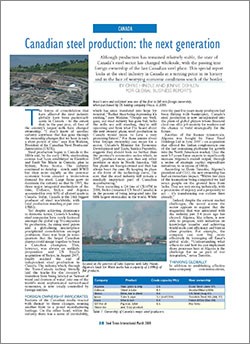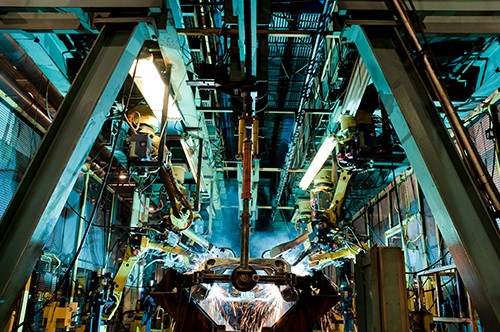
PUBLICATION
Canada Steel 2008 STI Release
The forces of consolidation that have affected the steel industry globally have been particularly acute in Canada – to the extent that, in the past year, all four of the country’s largest mills have changed ownership. Steel production began in Canada in the 1880s and, by the early 1900s, steelmaking centers had been established in Hamilton and Sault SteMarie in Ontario, plus in Sydney, Nova Scotia. The industry continued to develop – slowly until WWII but then more rapidly as the post-war economic boom created a tremendous demand for steel. Large firms grew to dominate the industry so that by 1997, the three major integrated steelmakers of the time, Dofasco, Stelco and Algoma accounted for over 60% of all steel made in Canada. Today, Canada is the 16th biggest producer of steel worldwide, with total production standing at just over 15 metric tons per year.













